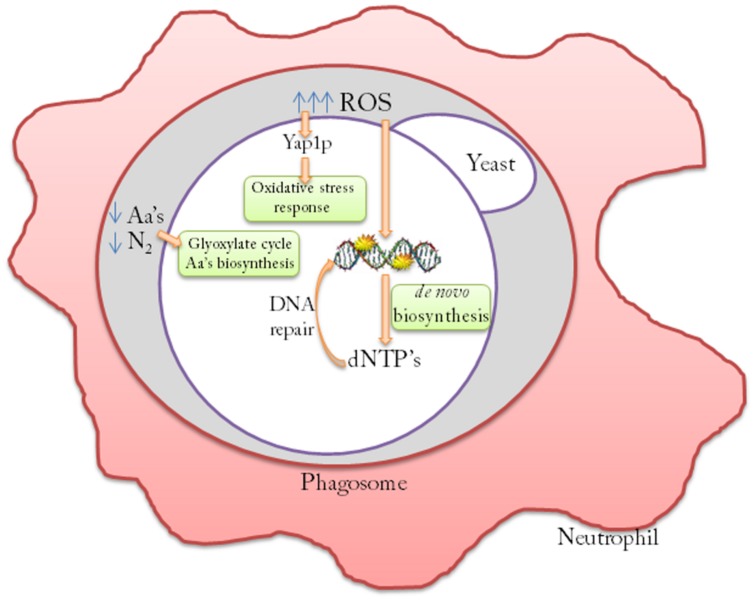FIGURE 1.
Molecular mechanisms of persistence of Saccharomyces cerevisiae cells after neutrophil engulfment. Opportunistic S. cerevisiae strains redirect the low levels of the nitrogen sources inside the phagosome to increase amino acids (aa’s) biosynthesis. These strains also increase the oxidative stress response by activating the Yap1p transcription factor regulon to counteract the lethal effects of reactive oxygen species (ROS) generated by the macrophage. De novo dNTP biosynthesis is activated to allow DNA repair machinery to counteract ROS-induced mutations.

